
There has never been more incentive to grow some if not all of your own vegetables as at the present time. Environmental and economic conditions - and yes - a hankering for the 'good life' all add up to good reasons to Grow your Own vegetables! Most important, is the part that vegetables (should) play in our diet general health. All animal life depends upon the eating of vegetation. Even carnivores have to eat fellow animals who feed on vegetation!
The growing of vegetables is not about 'goody goody' but about basic healthy eating and living. There has to be a stronger move towards eating vegetables - and fruit - if we wish to pursue a vital health well into our old age.

Full A-z of vegetables
Full listing of all the articles on this site relating to growing your own vegetables.
Most of the vegetables on show here can be grown - even in small space - by home gardeners.
We all know there is nothing quite like the taste of fresh (real fresh) fruit and vegetables so what are you waiting for.
Easy basic guides on here to steer you towards you own grown veg that will be the envy of your friends and neighbours.
But, we are not here to push the five a day argument. We are here to show you how to best grow your own vegetables if you choose to do so.

Bunches of Carrots
Growing vegetables is also therapeutic. The growing, harvesting and tasting of your own grown vegetables will give you a great deal of satisfaction - and often times of smugness!
Growing your own vegetables is not easy - whatever people might say. Other than the soil preparation, there are pest and diseases to be on the lookout for, and environmental considerations - not least the variable climate. If you are just starting out on growing your own vegetables, then take it easy - stage by stage. Get to know your soil type, speak to local allotment holders, and see what other gardeners are growing in your area. You might even start off by growing a few of the 'colourful' veggies in the shrub or perennial border. And, of course - in containers.
Grouped by Family
Brassicas include the Cabbage family
The right conditions for Brassicas - The cabbage family.
Savoy Cabbage - A Brassica
All members of the Cabbage family are classed as Brassicas. This group also includes some ornamental plants as well. Wallflowers (Erysimums) are also Brassicas. You only have to crush the stem or foliage of a wallflower to release the typical 'cabbage' smell!
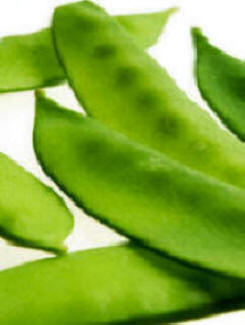
Peas and Beans
All Peas and Beans are members of the Legume family Legumes and Nitrogen Fixation. Beans and Peas - including such flowering plants as the Sweet Peas, and all members of the Legume family of plants. This family also includes trees, perennials and shrubs and are all important in one particular respect.
They are all able to 'fix' the all important plant food Nitrogen from the atmosphere. This is stored in small but visible 'nodules' on the root system, and is often left in the soil after the plant's death.
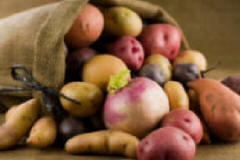
Root Crops
Just a few of the vegetables that come under the category of 'Root Crops'. Root Vegetables are a wide range of edible plants where the roots are the main source of our food. Technically, some crops we call root vegetables - such as potatoes - are not true roots. For instance in the case of potatoes, the 'tuber' is actually an underground stem and not a root. However, we are not talking about the finer botanical details here. We are talking about food!
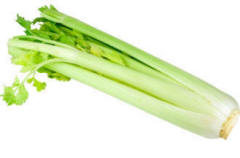
Salad Crops
Salad crops are good as space fillers in any garden area, as well as being grown in their own special area of the garden. Who knows, you might even get the kids interested once they see how easy and quick it is to get from seed to table.
The term 'salads' is a wide ranging term that covers any plant basically that can be eaten raw, or those varieties of plants which are used in conjunction with leafy salads. For instance, there are some varieties of potatoes which are grown specifically with salads in mind, and are normally served up cold after cooking of course.
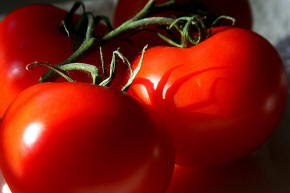
Tender Vegetables
There are quite a few vegetables that can be categorised as being tender vegetables. They generally need favoured conditions to get to harvesting. There are a few tricks that can be used to make sure that your tender vegetables make it through from sowing to eating.
These guides should help you to avoid the disappointments' that are common with growing tender vegetables. Just a few things to bear in mind, then you are well on the way to success.
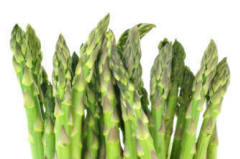
Other Vegetables
There are several 'borderline' types of vegetables - many of which are interesting and not beyond the growing abilities of most gardeners.
It's just that they don't quite come into the categories of 'root' crops or salads for instance.
On of these borderline vegetables is Asparagus, and although it has similar cultivation requirements to several root crops, it is decidedly not a root crop in general vegetable parlance!

Growing Vegetables in Containers
Most common vegetables can be grown in all manner of pots and other containers. For many homeowners, growing vegetables in containers is the only way forward because of lack of garden soil space.
Choose the right container, compost and varieties of vegetables to grow and there is no reason whatever why you cannot enjoy your own grown vegetables for virtually every month of the year. Growing vegetable crops in this manner presents very few problems, and the crops are often easier to manage and grow to fruition.
Vegetables need Fertilisers
We all need to eat. vegetables - and other plants are no exception!
The difference between success and good vegetable crops is often down to the feeding regime, and the types of fertilisers or manures that you use.
Always remember, that what you put into vegetables, you will eventually put into yourself! Don't worry though, all garden fertilisers go through a complex change of form to make them available for the vegetables and safe for us to eat
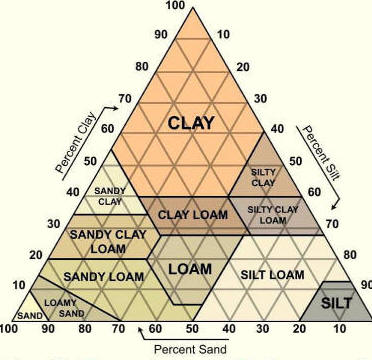
Soil Types for Vegetables
Soil is important for plant and therefore all animal life. One of the most important aspects of soil insofar as vegetable growing in concerned, is that of soil texture. Of course the acidity or Ph level of soil is also important, but this little detail can normally be rectified relatively easily. Not so with soil texture.
The soil texture - that is to say, sandy, loam, clay and silt soils - has been built up and determined over many years - centuries even. The only exception to this being if your soil has been imported from another area - as is sometimes the case with new house building projects, or if your predecessor was an avid gardener for many years and in that time, altered the basic structure-texture of the soil.

What to Grow
What Vegetables to grow when there is so much choice! If you are an experienced grower or allotment gardener, you probably know what you should be growing and when. But, we all need a bit of inspiration from time to time, or maybe something to get us out of the rut that we are in So, think different, grow different! Maybe the family will appreciate the taste of a different crop or variety!
When deciding which vegetables to grow, ask yourself why you actually want to grow vegetables, and what area you have for growing those vegetables at present. This will determine what type of vegetables you should grow. There is not a lot to be gained by trying to grow a crop of maincrop potatoes unless you have the room - and patience.
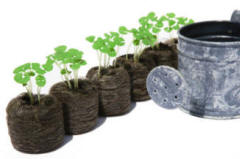
Seed Sowing and Seedlings of Vegetables
Most of the vegetables that are grown are started off from seeds - or maybe seedlings bought from the garden centre.
It is this area of vegetable growing that has the most potential for problems - if not total disaster. Worry not, these guides will help you to grow your vegetables from seed with great success.
It is the cheapest and healthiest way to get food on the plate. And that, is what it's all about.
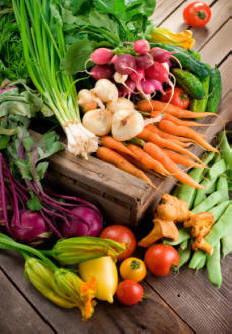
The Vegetable Plot
Vegetables don't just happen! They need to be made to happen. Growing vegetables is probably easier now than at any time.
Easy to grow varieties of vegetables, good pest and disease control sprays, and young plants available at the garden centre if you cannot be bothered with sowing sed.
The plot is essential of course, but it need not be a large allotment. It can be a few square yard in the garden - or just a few containers or grow bags.
Grow your own Vegetables
My rhetorical answer would be “Why not grow your own vegetables?
The fact that you have reached this page is reason enough! You are obviously interested, and maybe decided in your own mind. If it is just the actual act of doing something that is stopping you for now - let us see what we can do to move you forward!
Almost anyone can grow their own vegetables, for there are enough choices to make the where part of the equation a non-starter. Vegetables can be grown in the garden; in a pot; in a greenhouse; indoors; on an allotment; or even in a dish on the kitchen windows
Vegetables can be grown in most gardens - even in flower borders! But, for dedicated vegetable growing, an open, sunny spot of the garden is best for most vegetables. You can also grow vegetables in all manner of containers, grow bags, hanging baskets, window boxes and as stated, many vegetables can be grown in a mixed border. Some are very very colourful!
If you want to move on to providing vegetables for the family for most of the year, then a dedicated vegetable garden is a must. This can either be at home if there is room, or you might want to try your hand at an allotment - if you can get one!
If your garden is perpetually damp, then a raised vegetable garden might be the answer. In any event, raised beds are a good idea for some crops.
If you are serious about your vegetable growing, then there is something to be done in the vegetable plot at most times of the year. However, the most productive time for growing most vegetables is from late Spring through to Autumn. Many vegetables that are grown in this period can also be stored for use in the winter months. Together with this, there are several vegetables that can be cropped throughout Winter - giving you some form of fresh vegetables throughout the year.
If you have a greenhouse - or just a cold frame - this will extend your season substantially. The same is true of other forms of protection - cloches, horticultural fleece, and home-made low poly tunnels are all good ways that will help you answer the question of When can I grow Vegetables?
The whole family can be part of the vegetable growing regime. It is no longer the preserve of The Man! Involve the kids, and everyone else. After all, once they have tasted the difference with shop-bought vegetables, they should be encouraged to take part in the growing. There really is nothing to stop anyone from growing vegetables.